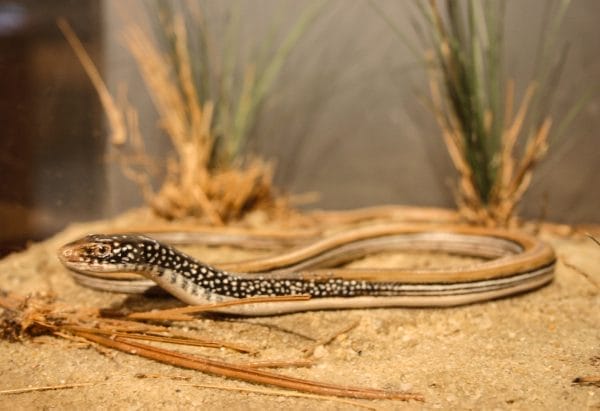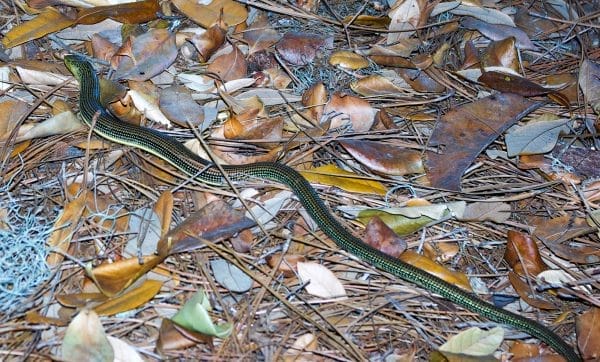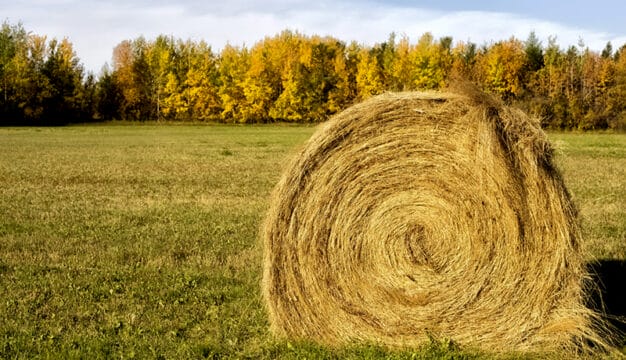Glass Lizards
 Mimic Glass Lizard
Alabama is home to three species of reptile in the genus Ophisaurus (Greek for “snakelike lizard”): the eastern glass lizard (Ophisaurus ventralis), the eastern slender glass lizard (Ophisaurus attenuatus longicaudus), and the mimic glass lizard (Ophisaurus mimicus). Often mistaken for snakes, glass lizards possess only vestigial legs or lack them entirely. They are found in many parts of the world, with most living in Asia. In the United States, they are restricted to the Southeast. The species in Alabama are entirely limbless, hence the colloquial term “glass snakes.” The group is also colloquially known as the joint snake, horn snake, and stinging snake, although it is not a snake and does not possess horns or a stinger.
Mimic Glass Lizard
Alabama is home to three species of reptile in the genus Ophisaurus (Greek for “snakelike lizard”): the eastern glass lizard (Ophisaurus ventralis), the eastern slender glass lizard (Ophisaurus attenuatus longicaudus), and the mimic glass lizard (Ophisaurus mimicus). Often mistaken for snakes, glass lizards possess only vestigial legs or lack them entirely. They are found in many parts of the world, with most living in Asia. In the United States, they are restricted to the Southeast. The species in Alabama are entirely limbless, hence the colloquial term “glass snakes.” The group is also colloquially known as the joint snake, horn snake, and stinging snake, although it is not a snake and does not possess horns or a stinger.
Despite their resemblance to snakes, they are true lizards (suborder Lacterilia), distinguished by their ear holes and eyelids, features snakes lack. Also, they cannot separate their lower jaws to swallow prey larger than their heads, as snakes can. They are less flexible than snakes and can only push themselves along with their side scales and not their belly scales, thus they can be greatly slowed down or even immobilized by a hard flat surface. Their common name, glass lizard, comes from the ease with which their tails can detach as a defense mechanism. As much as two-thirds of their body length can be tail, and as that long tail often breaks off in several sections, a glass lizard that has detached its tail can appear to have broken or shattered into multiple pieces. Contrary to folk belief, they do not rejoin their broken pieces, but the tail eventually grows back over a period of months or years. As with most lizards, the regrown tail is rarely as long as the original one. It is also usually lighter in color than the original tail, giving rise to its nicknames of joint snake.
Glass lizards are nonvenomous and completely harmless to humans. They are quite fragile, and if one must be handled, it should be gently grasped by the upper body, just firmly enough to restrain it from thrashing and detaching its tail. The lizard may also attempt to bite, but its jaws are usually not powerful enough to break or even bruise human skin, and the bite is rarely painful.
Insects are the primary food of the Alabama species of Ophisaurus. As adults, their most common prey is grasshoppers, but they also regularly eat crickets, katydids, beetles, spiders, isopods, and caterpillars. Large specimens have been observed to catch and devour small lizards and snakes and are believed to eat the young of small mammals. They are in turn preyed upon by various types of bird as well as coyotes, foxes, skunks, minks, raccoons, opossums, rats, snapping turtles, and snakes, as well as domestic cats.
Eastern glass lizards mate in late May and early June. The female will seek cover under a log, board, bark, or leaves and typically lay a clutch of 7 to 15 eggs. She remains coiled around the eggs until they hatch 50 to 60 days later. Females do not actively defend their eggs and usually abandon them if the nest becomes uncovered. There is no typical difference in the body sizes of male and female eastern glass lizards but male slender glass lizards are often larger than females. There are no observed sex-based color differences in the two species. Not enough is known about the mimic glass lizard to determine if size and coloration differ according to gender.
 Eastern Glass Lizard
The eastern glass lizard is the largest of the three species found in Alabama, reaching up to 43 inches (109 centimeters), although the snout-to-vent length is rarely more than 12 inches (30 centimeters). It also has the widest range, being found throughout much of the South. In Alabama, eastern glass lizards are most common in the East Gulf Coastal Plain. They are a greenish color with a yellowish underbelly. Eastern glass lizards are good burrowers and prefer wet meadows, grasslands, and pine flatwoods. In addition to the typical diet of other glass lizards, eastern glass lizards can grow large enough to feed on frogs, mice, smaller reptiles, and the eggs of small birds. This species is abundant in the state, and its conservation status is therefore of low concern.
Eastern Glass Lizard
The eastern glass lizard is the largest of the three species found in Alabama, reaching up to 43 inches (109 centimeters), although the snout-to-vent length is rarely more than 12 inches (30 centimeters). It also has the widest range, being found throughout much of the South. In Alabama, eastern glass lizards are most common in the East Gulf Coastal Plain. They are a greenish color with a yellowish underbelly. Eastern glass lizards are good burrowers and prefer wet meadows, grasslands, and pine flatwoods. In addition to the typical diet of other glass lizards, eastern glass lizards can grow large enough to feed on frogs, mice, smaller reptiles, and the eggs of small birds. This species is abundant in the state, and its conservation status is therefore of low concern.
The slender glass lizard is found throughout the state but is uncommon to rare and therefore of moderate conservation concern. It reaches lengths similar to those of the eastern glass lizard but has a slimmer body and can be distinguished by the presence of dark stripes below the lateral groove running along the sides of its body and the lack of any apparent green in its yellow-brown coloring. Its diet is similar to that of the eastern glass lizard.
The mimic glass lizard is the rarest and smallest of the three species, with a tail-to-vent length of less than eight inches and an overall length of less than two feet. Relatively little is known about this species, which was first described in 1987. Only three documented occurrences have been recorded in Alabama, in Baldwin, Covington, and Mobile Counties, and all are museum specimens dating from before the mimic glass lizard was recognized as a separate species. They are associated with the endangered longleaf pine-wiregrass ecosystem and are considered to be of highest conservation concern. The most recent specimen from Alabama was collected in 1978, and the species may be extirpated within the state.
Additional Resources
Conant, Roger, and Joseph Collins. A Field Guide to Reptiles and Amphibians, Eastern and Central North America. New York: Houghton Mifflin, 1998.
Guyer, Craig, Mark A. Bailey, and Robert H. Mount. Lizards and Snakes of Alabama. Tuscaloosa: University of Alabama Press, 2019.



